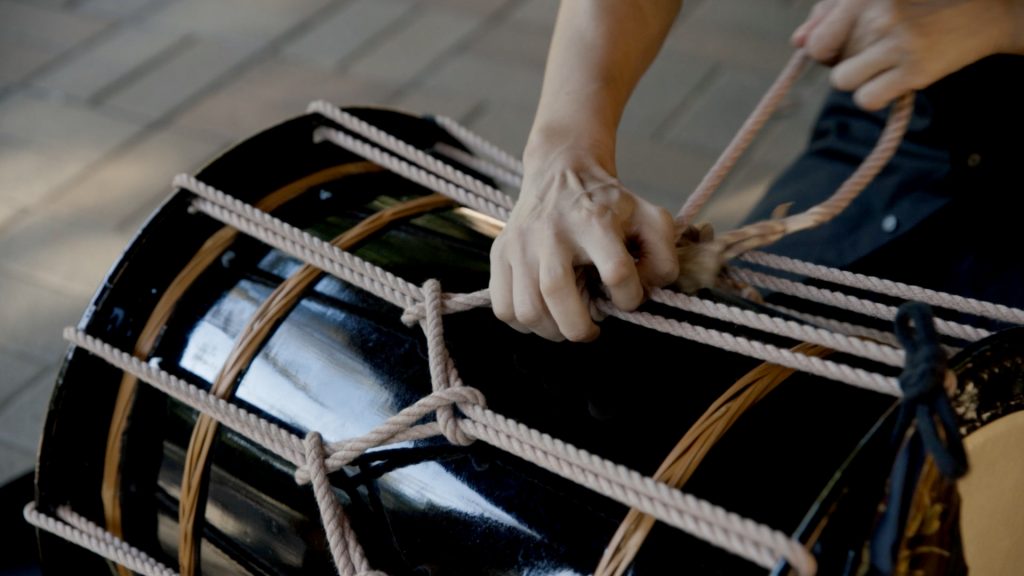
#003 Yuki Mikado Japanese drum instructor
2022.11.21

2022.11.21
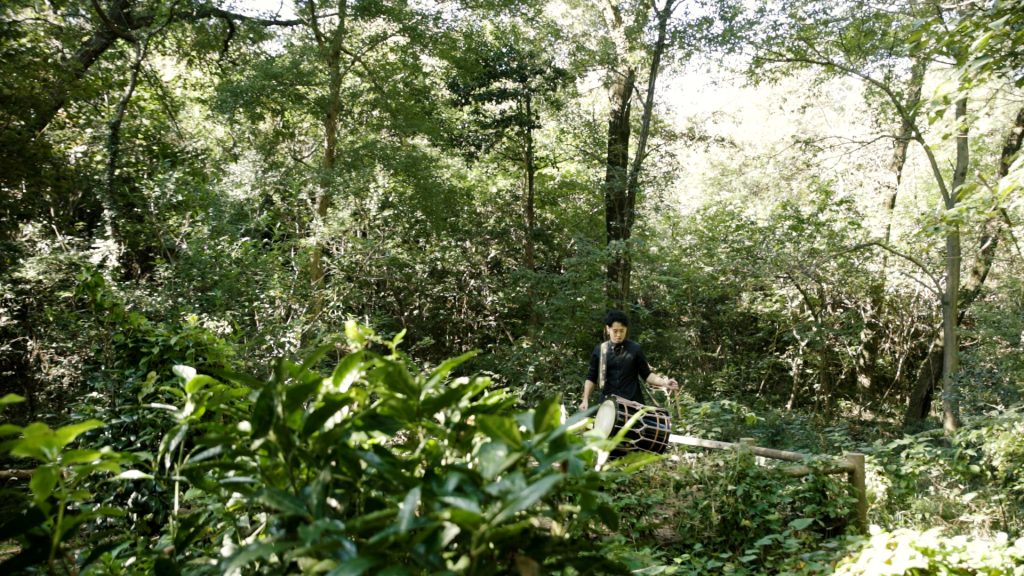
On a clear and pleasant morning, I headed to the meeting place with Yuki-san Mikado, a taiko drummer and instructor.
The place where we would meet today was in a forest.
The soft sunlight filtering through the trees creates polka dots on the ground, and small birds are chirping coolly.
Acorns and pine cones are strewn countless times along the boardwalk, and once you step into the forest, it is easy to forget that you are in Nagoya.
Mikado-san, dressed in a chic black top and bottom outfit with a hint of Japanese taste, had a soft smile on his face.
He carried a taiko drum, which was thicker than his body, lightly on his back as he walked briskly along the promenade.
It looks big, but it’s not that heavy because it’s hollow inside,” he said.
He then tied ropes one after another around the body of the wadaiko, which he took out of its case.
The way the rope is tied adjusts the strength of the tension of the drum’s surface and ensures that a good tone resonates through the drum.
The black, glossy taiko drums, which show signs of human hands, have a cool, imposing presence.
The sound of the taiko is checked by the drummers as they beat the drums from time to time.
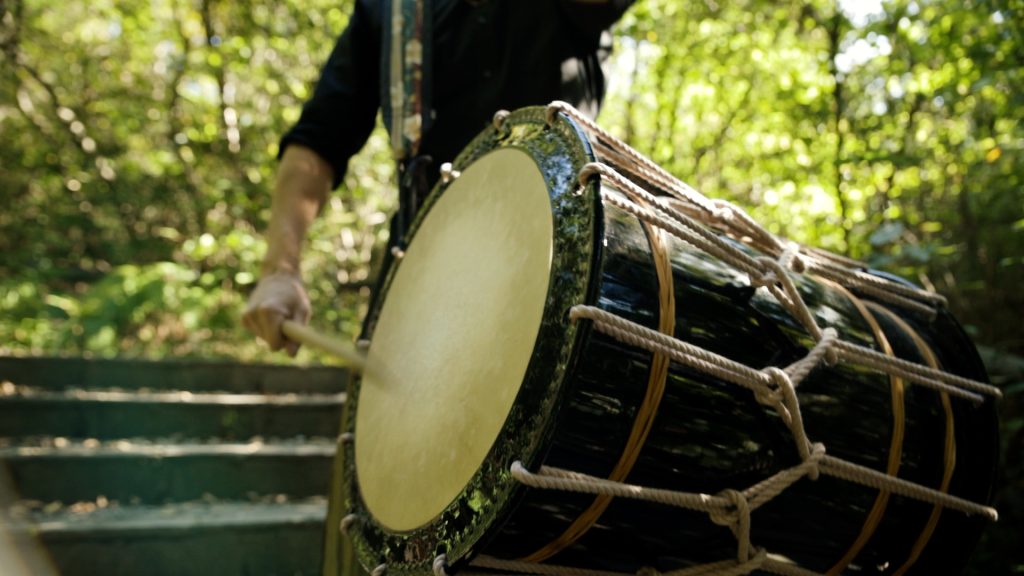
Finally, it was time to play.
From the moment he holds the bachi in his hand, the air around him changes.
Boom! the moment the first sound is struck, the sound echoing straight toward us is overwhelming.
The sound is heroic and powerful.
The constant beating of the taiko echoes and bounces off somewhere in the vast forest.
The waves of sound are strong, but at the same time comforting.
The light, resonant sound and birdsong harmonize in the forest.
It is not only the sound that catches the eye.
The movements of the dancers’ arms, their never-ending expressions, the rustling of the forest, the light, and everything else in the space, are all part of the sound.
It is as if a big wave swells and surges into the body of those who are listening to the music.
A sense of elation filled the air, as if we were being carried on a boat of sound and wanted to row out to wherever we wanted to go.
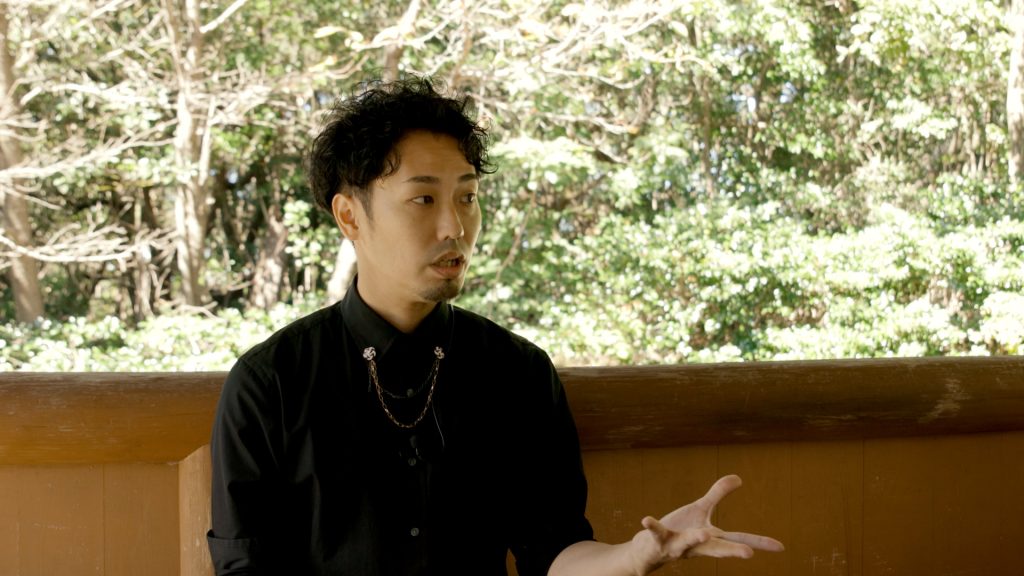
I work for a company called Tokai Taiko Center, which is engaged in taiko related business.
I also run a taiko group called “Izuru,” which focuses on Japanese traditional instruments.
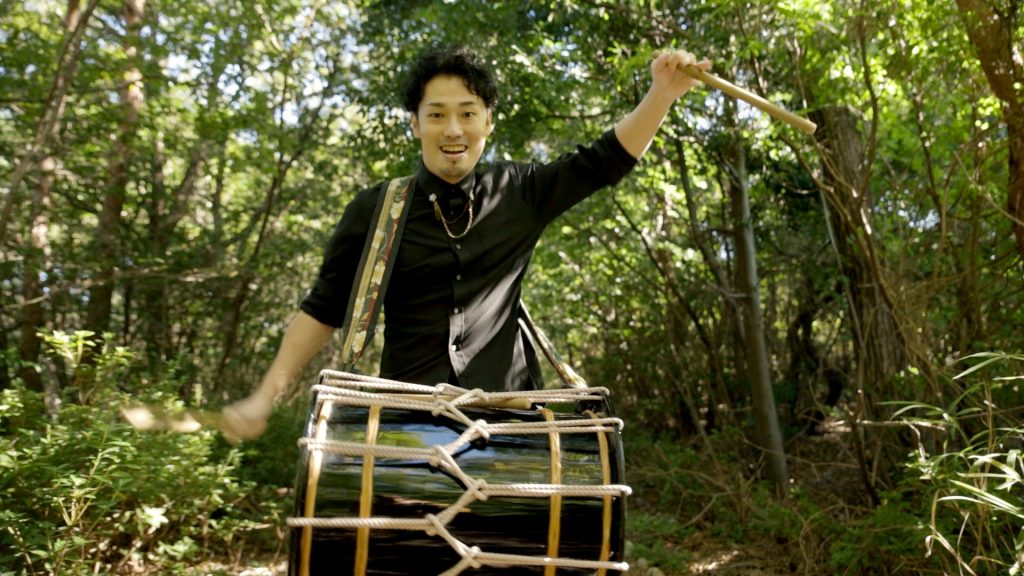
The title “Jandoko” doesn’t mean much.
It is a song that first lets the audience know our view of the world, and then leads into the rest of the performance.
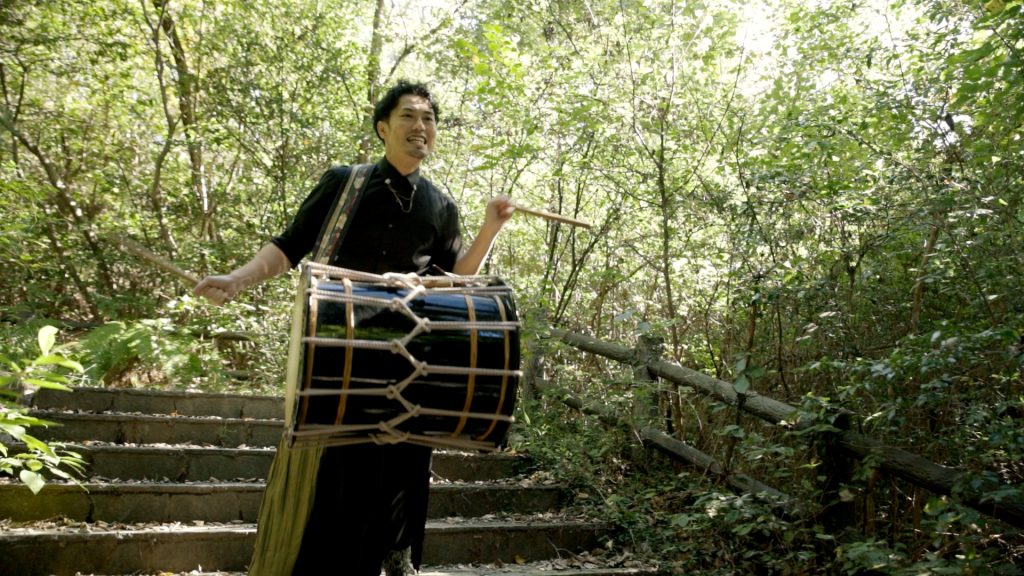
I try to show the audience the many faces of taiko, so that even those who are new to taiko can enjoy the fun of taiko.
We are very conscious of the fact that we have to show the audience how cool taiko is, but we also have to show them how fun it can be.
I am very conscious of not boring the audience.
I am very conscious of that, even in the way I make facial expressions, and when there are a lot of people in the audience, I am always wondering if they are having fun, and if they are having fun too.
Taiko is not a musical instrument that has a do-re-mi-fa-sola-sedo scale, so I try to be conscious of how much I can have a scene where the audience can rest their ears during the performance.
I am sorry to say this as a taiko player, but my ears get tired if I listen to the loud sound of the drums all the time (laughs).
(Laughs) The essence of taiko is to make loud sounds, but how much can we we weave in small, delicate sounds, sometimes including sounds that are not taiko.
I am very conscious of the fact that by doing so, I can make people think that the sound of loud taiko is wonderful and cool.
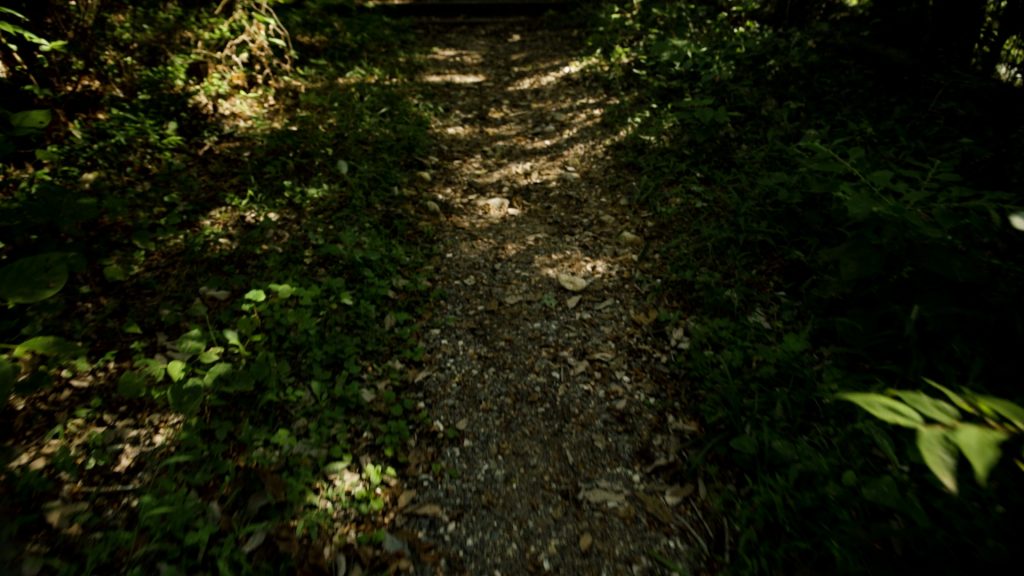
I don’t know. I don’t care if I have to stop, I just don’t. If I stop, there is nothing I can do. If I stop, there is nothing I can do.
For example, there may be many factors, such as your ability and the environment around you, but I think it is very important to keep going, even if it is in a small way.
No matter how talented you are, if you don’t do it, you will never be noticed.
I was originally a member of a professional team called “Dakanto,” which was the exclusive professional team of the Tokai Taiko Centre, but as I was working there, I wanted to focus mainly on teaching, which meant performing.
For example, there were many times when I had to cancel classes for performances, which was difficult for me to come to terms with.
If I said that I would not participate in performances, it would naturally cause a lot of trouble for the members, and it became very difficult for me to find a balance between the two. I decided to leave Uchujin and devote myself to teaching, but I found myself losing confidence in my students.
The students are practicing hard.
I was not confident anymore when I was asked how I was doing.
(I realized that my performance activities, which I thought were surprisingly unnecessary (for me), were an important axis of my life, and now I hope to do them without losing my balance.
I decided to set up “Izuru” by myself as such a place.
I work at Tokai Taiko Center, and I’d like to see how big this place can become. I hope that we can create many such places.
I hope that we can create many such places. Since “Izuru” is directly related to the teaching part of our activities, we would like to perform in places where people can see and enjoy taiko through our performances. We haven’t had a chance to perform outside of the prefecture yet, so I hope that our activities will expand in that way.
On Sunday, December 11, we will be holding a concert at the Nagoya Arts Center to celebrate the 30th anniversary of the founding of the Tokai Taiko Centre.
Many of the players who have been involved with Tokai Taiko Center in the past will be there as guests to celebrate, and it will be an opportunity for people to see our 30th anniversary, so I hope that many people will come and experience what we have to offer. We look forward to seeing you there.
Also, on February 19 (Sun.) next year, at the Mizuho Bunka Little Theater, there will be a joint live performance by the production team I am leading.
Five groups will perform. I have posted an announcement on my Instagram, etc., so I hope you will come and see it.
The song “Jandoko,” which I had the opportunity to listen to this time, has an impressive rhythm that naturally makes me feel excited.
I heard that it is originally performed by three members, and I would love to hear it live! I was very interested in hearing it live.
Mr. Mikado is actively teaching taiko at schools and other venues around Nagoya and Aichi Prefecture.
I hope many people will enjoy the live sound and performance.